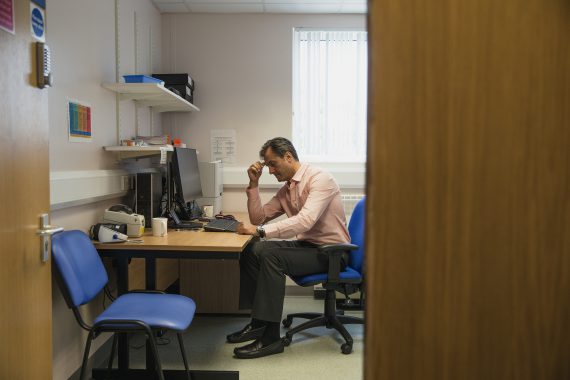Lower GP practice ratings due to workforce and demand issues, says CQC

Workforce challenges and rising patient demand have contributed to practices receiving lower CQC ratings, the watchdog has said.
In its latest report on the state of health and adult social care in England, the CQC revealed that a ‘large group of GP practices’ have deteriorated to a lower rating due to ‘ongoing capacity pressures’.
CQC chief executive Ian Trenholm said an increasing number of good providers are now moving into ‘requires improvement’.
Presenting the findings of the report, he revealed that practices are struggling to improve and sustain a good rating due to demand rising faster than the workforce.
According to the report, 13% of GP practices went from ‘good’ to ‘requires improvement’ in the year to 31 July 2019, based on the previous and the most recent inspection.
Meanwhile, more than a third of practices (35%) rated inadequate failed to improve after re-inspection.
Mr Trenholm said: ‘In primary medical services, GPs are doing a really good job, they’ve had a 95% good or outstanding [rating] for a number of years now. So the opportunity to improve and increase is hard.
‘However, we are seeing movement in the sector, which could potentially cause some concerns.
‘We’re seeing good providers moving to “requires improvement” and we’re seeing “requires improvement” providers increasing so although the net figures look ok now there’s more movement perhaps than there once was.’
He added: ‘There’s a continuing challenge in accessing GP services but also GPs able to access other community services to refer people on when they need local help. And the reason is there’s insufficient integration across community and acute services. We know also that demand for GP services is increasing and that demand is increasing faster than the workforce available.’
The report said: ‘Although overall ratings are similar to 2018, re-inspections show that some GP practices are moving down as well as up in ratings, and there are signs that improvement has become harder to achieve and to sustain. The change on re-inspection in 2019 shows that a large group of GP practices have failed to improve and move out of the lower ratings and more than a third of practices rated as inadequate have not improved on re-inspection.
‘We have reported previously that some GP practices have not been able to improve or to sustain improvement because of issues with poor leadership and management, but ongoing capacity pressures on general practice as a whole may affect the ability to improve.’
The latest NHS Digital statistics show that the number of fully qualified full-time equivalent GPs in England has fallen by 576 over the past year, with 28,257 full-time equivalent GPs (excluding registrars) in June 2019 compared to 28,833 in June 2018.
Mr Trenholm also said that fewer newly qualified GPs are interested in joining a partnership, which is having an impact on the delivery of good patient care.
He said: ‘I’ve had conversations with GPs where they talked about the difficulty of interest in newly qualified GPs in partnership opportunities. People want a more flexible working environment in general practice and that’s mainly why the numbers of GP practices made remain stable.
‘They have been increasingly challenged in keeping GPs, practice nurses and other practitioners in their practice able to deliver the services that they need and that’s a complicated factor in terms of delivering good frontline care.’
In January, the CQC announced new ‘structured phone calls’ with 10-15 practices, with the aim to cut the frequency of inspections for practices rated good or outstanding to as little as once every five years.
CORRECTION: The article previously said 65% of ‘good’ practices were rated ‘inadequate’ on second inspection. This was incorrect. The figure is 13%
Pulse July survey
Take our July 2025 survey to potentially win £1.000 worth of tokens












